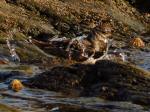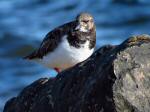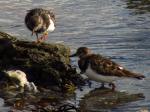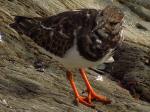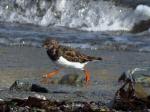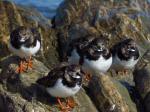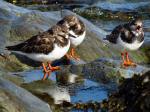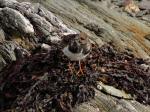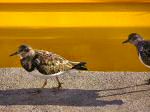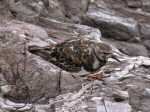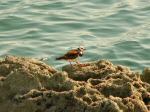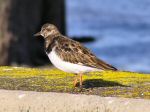Latin name - Arenaria interpres
The Turnstone can be seen all around our coasts although it shows a preference
for rocky areas where it will search under stones for insects, small crustaceans
and molluscs: hence its name of Turnstone. They are not resident, wintering
here before returning in summer to their breeding grounds in Greenland
and Scandinavia. Some immature birds will spend the summer here. Both
sexes are the same with a mottled chestnut and black upper-parts, white
under-parts, orange legs and a black and white head. They can be very
difficult to see amongst a rocky shore blending in well with the surroundings.
In summer plumage the head becomes black and white, rich red-brown and
black colours appear in the mantle. |
